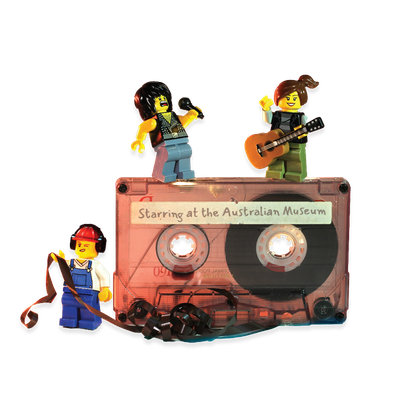Your search returned 12429 results
By Page Type
By Tag
- fish (966)
- blog (696)
- fishes of sydney harbour (401)
- First Nations (297)
- Blog (236)
- AMRI (169)
- archives (164)
- Eureka Prizes (146)
- Aboriginal and Torres Strait Islander (135)
- insect (126)
- Ichthyology (124)
- geoscience (109)
- minerals (102)
- climate change (99)
- podcast (94)
- Fish (91)
- Anthropology (89)
- International collections (80)
- Minerals Gallery (78)
- wildlife of sydney (78)
- Labridae (77)
- frog (73)
- gemstone (70)
- photography (65)
- history (63)
- Mollusca (60)
- gem (59)
- staff (59)
- Birds (56)
- Gems (56)
- Indonesia (56)
- education (55)
- shark (55)
- AMplify (54)
- people (53)
- earth sciences (50)
- past exhibitions (50)
- exhibition (49)
- Gobiidae (48)
- sustainability (46)
- Pomacentridae (45)
- Serranidae (44)
- lifelong learning (42)
- science (42)
- Earth and Environmental Science (41)
- Syngnathidae (41)
- Ancient Egypt (40)
- Bali (40)
- bird (40)
- dangerous australians (40)
-
DigiVol: What... you work with dead insects!
https://australian.museum/learn/news/blog/digivol-what-you-work-with-dead-insects/Read here about two volunteers who work on the Digitisation Project
-
The first modern humans in Southeast Asia
https://australian.museum/learn/science/human-evolution/the-first-modern-humans-in-southeast-asia/Archaeological evidence shows that modern humans had reached Southeast Asia by 70,000 years ago, however the oldest securely dated modern human remains are only about 40,000 years old.
-
Homo floresiensis
https://australian.museum/learn/science/human-evolution/homo-floresiensis/One of the most controversial and surprising hominin finds in a century.
-
Edwin Charles Prince
https://australian.museum/learn/collections/museum-archives-library/john-gould/edwin-charles-prince/Gould also relied very heavily on his personal secretary Edwin Prince, who was responsible for managing the day-to-day affairs of Gould's business.
-
Homo sapiens – modern humans
https://australian.museum/learn/science/human-evolution/homo-sapiens-modern-humans/All people living today belong to the species Homo sapiens. We evolved only relatively recently but with complex culture and technology have been able to spread throughout the world and occupy a range of different environments.
-
Australopithecus garhi
https://australian.museum/learn/science/human-evolution/australopithecus-garhi/This hominin lived 2.5 million years and, although similar to other australopithecines, it displayed some surprising features.
-
Orrorin tugenensis
https://australian.museum/learn/science/human-evolution/orrorin-tugenensis/A key specimen of the human story, its position on our family tree is highly debated. Is it the oldest known hominin or should it be placed on the tree before the human line split from the line leading to chimpanzees?
-
The human family tree
https://australian.museum/learn/science/human-evolution/the-human-family-tree/Our family tree extends back for five to seven million years to the time when our ancestors took their first two-legged steps on the path toward becoming human. During this vast period of time our family tree grew to include many ancestors representing different species from our evolutionary past
-
The first migrations out of Africa
https://australian.museum/learn/science/human-evolution/the-first-migrations-out-of-africa/About 2 million years ago, the first of our ancestors moved northwards from their homelands and out of Africa.
-
What will we look like in the future?
https://australian.museum/learn/science/human-evolution/what-will-we-look-like-in-the-future/Predicting what we will be like in the future has been the domain of science fiction writes for centuries
-
Discover more
2025 Australian Geographic Nature Photographer of the Year
Special exhibition
Free entry
Now open -
Discover more
Unfinished Business
Special exhibition
Free entry
Now open -
Discover more
Wansolmoana
Permanent exhibition
Free entry
Open daily -
Find out more
Burra
Permanent kids learning space
Free entry
10am - 4.30pm![]()
-
Discover more
Minerals
Permanent exhibition
Free entry
Open daily![]()




